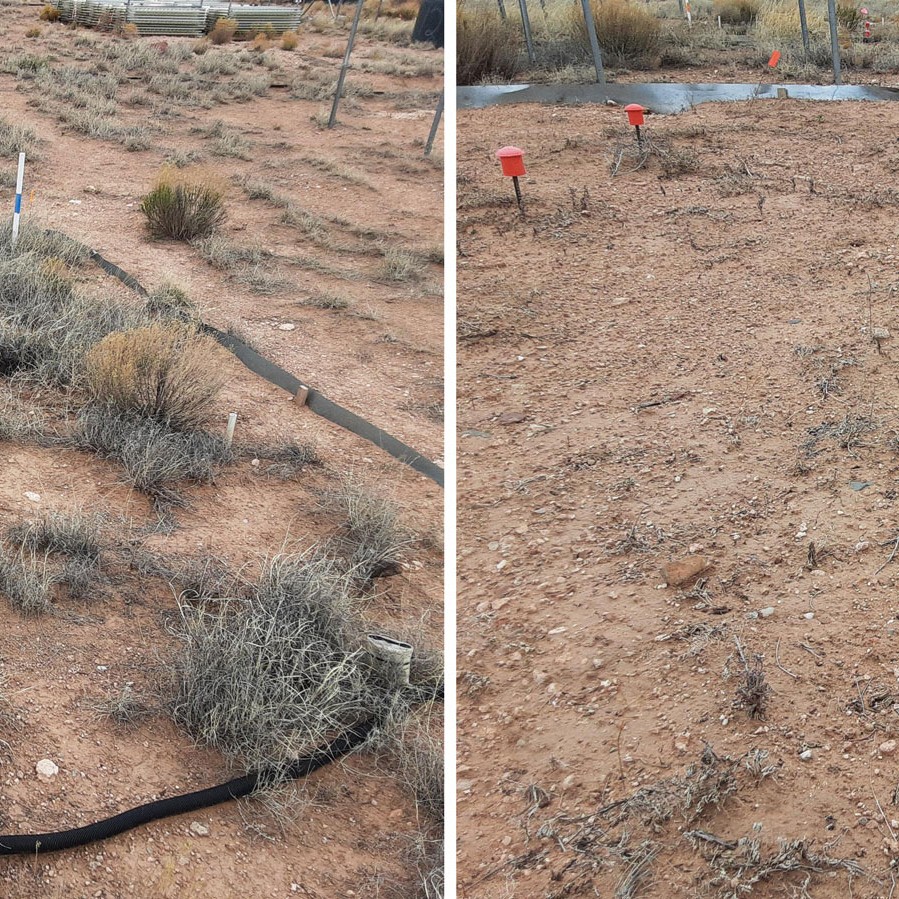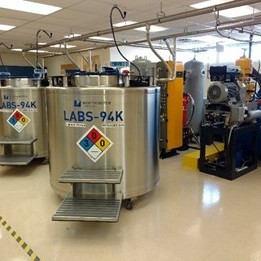Objective:
The LTER network has untapped opportunities to monitor evolutionary response to environmental change. We follow population traits and their underlying genetic bases every 6 years in natural habitats and also in our Mean-Variance experiment. The ongoing revolution in genetic sequencing technologies means that we are increasingly able to connect phenotypic changes in populations to genetic changes, even in non-model species. Our robust monitoring program couples shifts in species traits (See Plant Trait and Consumer Trait monitoring) with the evolutionary changes that underlie those traits by archiving tissues for future sequencing.
Novelty:
Evolutionary monitoring has rarely occurred at LTER sites, and represents an important enhancement of the LTER mission with high potential for novel insights into eco-evolutionary feedbacks. Our new archive of tissue samples are preserved in tanks of liquid nitrogen at the UNM Museum of Southwestern Biology.
Design:
We archive and investigate the genetic histories of dominant dryland species, using exact GPS coordinates for re-sampling. We sample roots of five foundation plant species (to include their microbiomes), six small mammal species (20% of SEV species), eleven grasshopper species (20%), and soils containing the two dominant species of Microcoleus, the foundational cyanobacteria taxa in biocrusts. For species with dormant storage (e.g. seeds, spores), we adopt the seed banking methods of Project Baseline (Etterson et al. 2016). For microbes in biocrusts and in plant roots, we are generating a long-term record of shifts in microbial composition that track climate. As genes for climate adaptations are identified, we will use archived materials plus extensive museum collections to assess molecular signatures of selection and shifts in allele frequency.
Responses:
During the first six years, our efforts are primary archival. We preserve tissues for future sequencing work in the UNM Museum of Southwestern Biology, along with rich metadata.
Supporting Documents:
A SEV LTER example of evolution in action in response to climate change:
Whitney KD, Mudge J, Natvig DO, Sundararajan A, Pockman WT, Bell J, Collins SL, Rudgers JA. Experimental drought reduces genetic diversity in the grassland foundation species Bouteloua eriopoda. Oecologia. 2019 Apr;189(4):1107-1120. https://doi.org/10.1007/s00442-019-04371-7
Etterson JR, Franks SJ, Mazer SJ, Shaw RG, Gorden NL, Schneider HE, Weber JJ, Winkler KJ, Weis AE. Project Baseline: An unprecedented resource to study plant evolution across space and time. Am J Bot. 2016 Jan;103(1):164-73. https://doi.org/10.3732/ajb.1500313


